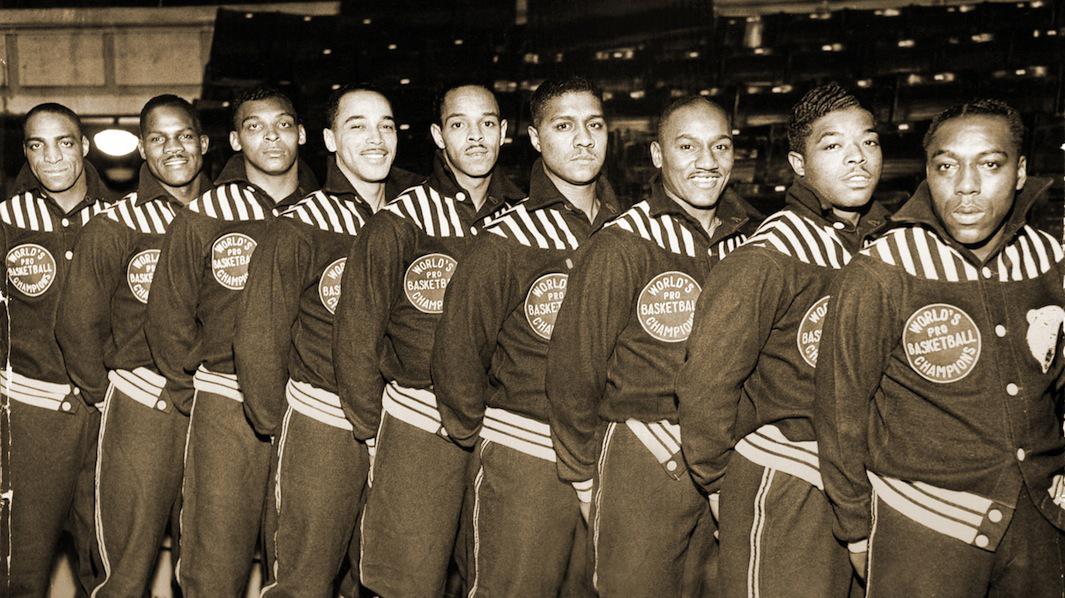Long before the National Basketball Association became racially integrated in 1950, black players had been charting their own course in basketball. The New-York Historical Society’s exhibition “The Black Fives” tells that nearly 50-year history in photographs, objects, and other memorabilia. Taken together, it celebrates the pioneering teams (known as “fives” for their five starting players) and athletes who shaped the early days of the game and paved the way for progress in other areas of black life.
According to the Black Fives Foundation, a not-for-profit that collaborated on the exhibit and works to promote the history of this era of black basketball, blacks have been playing the game since high school teacher Edwin Bancroft Henderson introduced it to his students in 1904. In 1906, the Smart Set Athletic Club of Brooklyn, N.Y., became the first independent black basketball team in the country. Others followed, including the Alpha Physical Culture Club, the nation’s first all-black athletic club, and the New York Girls, the first all-black female team. Later, the New York Renaissance Big Five, also known as the “New York Rens,” became the first black-owned professional basketball team and went on to win the first World Championship of Professional Basketball in 1939.
Until integration in the NBA in 1950, blacks couldn’t play on white teams, and they were historically barred from playing in gymnasiums owned by whites. Instead, they played in other spaces, including church basements, meeting halls, and dance ballrooms. “We can learn a lot from the obstacles and challenges these pioneers faced. They had no road map or precedent. Probably some of the challenges they faced are similar to those we face today,” said Claude Johnson, the founder and executive director of the Black Fives Foundation. “Rather than panic or run away we should ask, ‘How do we face those challenges and do something?’ ”
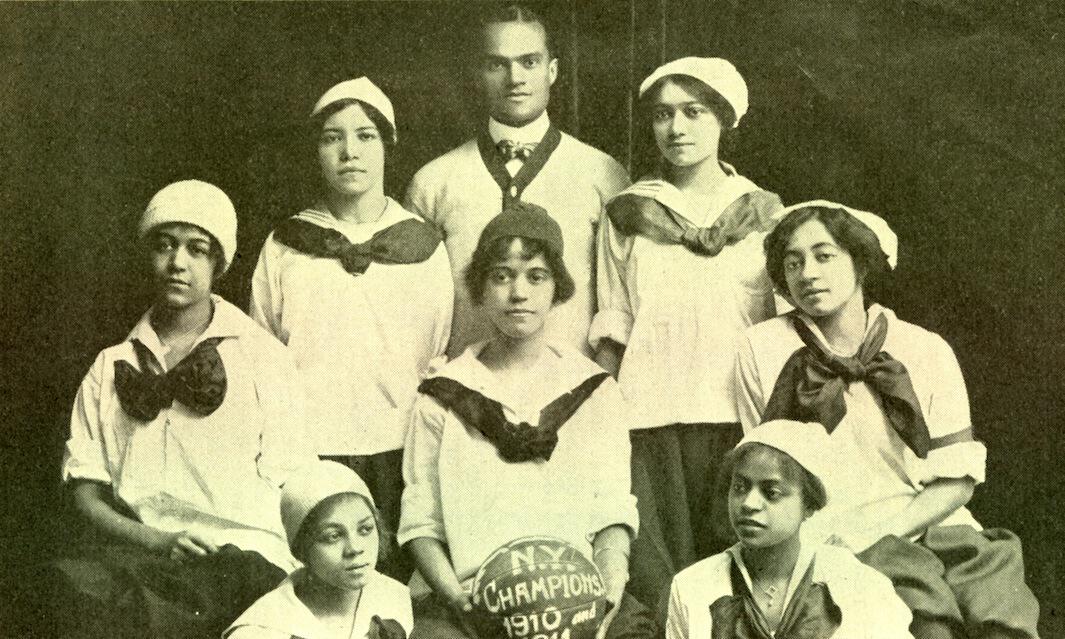
Courtesy of the Black Fives Foundation
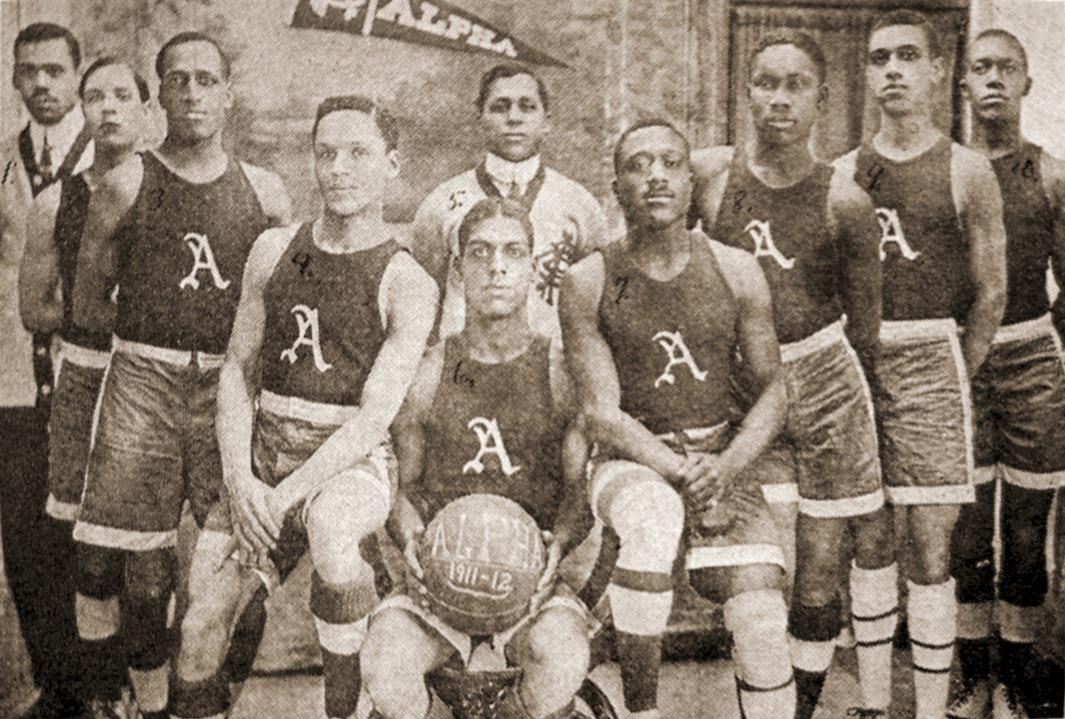
Courtesy of the Black Fives Foundation
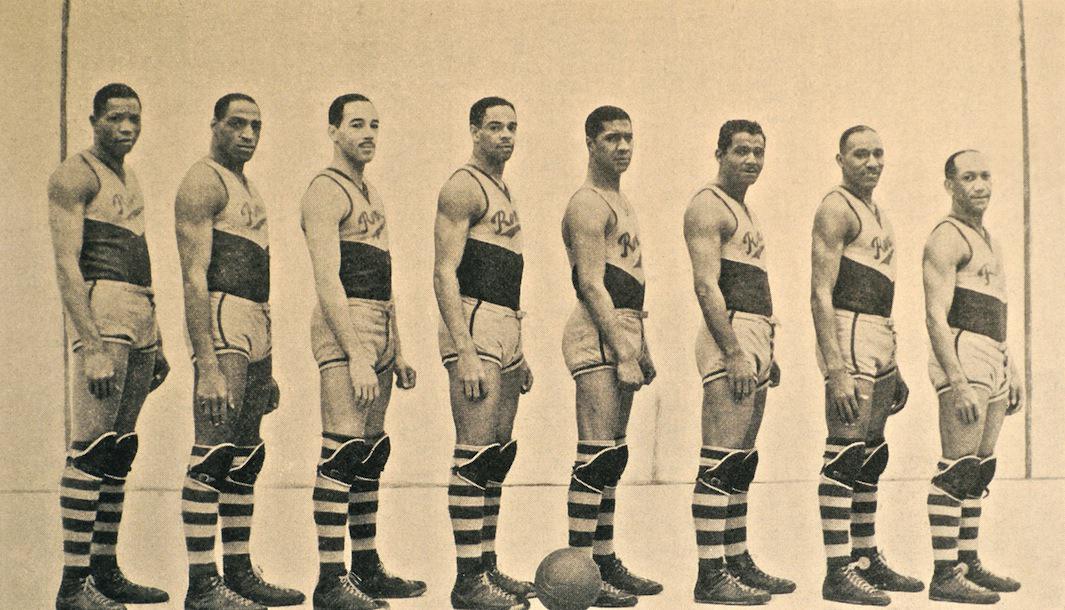
Courtesy of the Black Fives Foundation
Basketball events, which often attracted attendees by hosting dances before or after the game, served an important social function for blacks in the post-Reconstruction era. “People were escaping to the North,” Johnson said. “They were bewildered coming from the rural South, and they had to find a way to get their bearings in the big city. One way was through these social events. The music and the dancing brought people together, but then there were also the games.”
The exhibit includes photographs culled from eBay, the Library of Congress, and the descendents of the athletes. “When you look at those team images, the men and women are standing there looking at the camera as if they all got a memo that said, ‘This is serious.’ They’re not happy, sad, bragging, or celebrating. They’re not mad. They’re not trying to intimidate. There’s purposefulness, and it’s a really positive affirming look on their faces. What I read into that is they are all doing this for something bigger than their team and even bigger than the sport,” Johnson said.
“The Black Fives” is on view through July 20 at the New-York Historical Society in New York City.
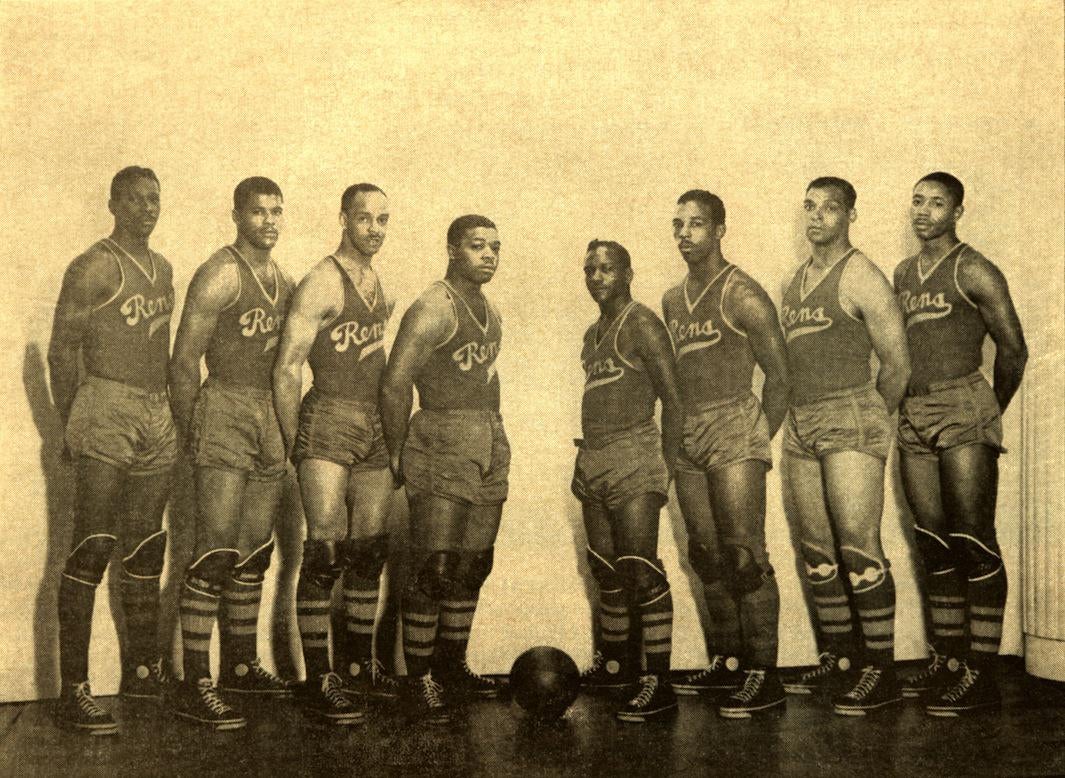
Courtesy of the Black Fives Foundation
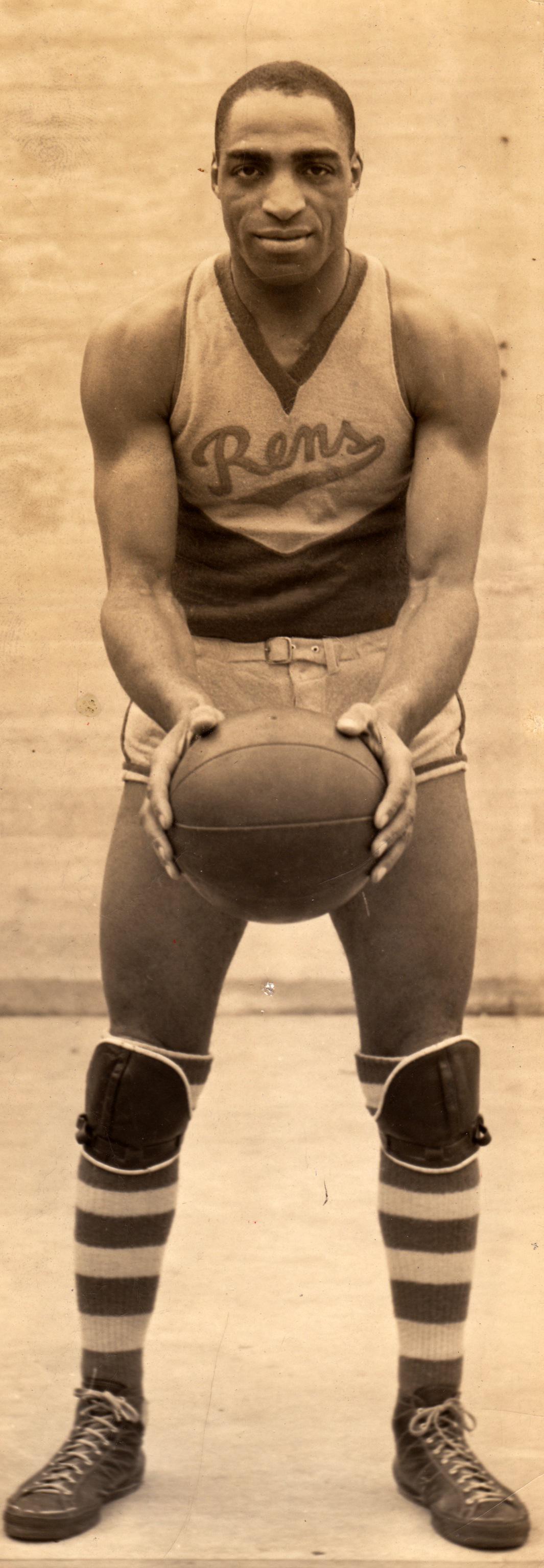
Courtesy of the Black Fives Foundation
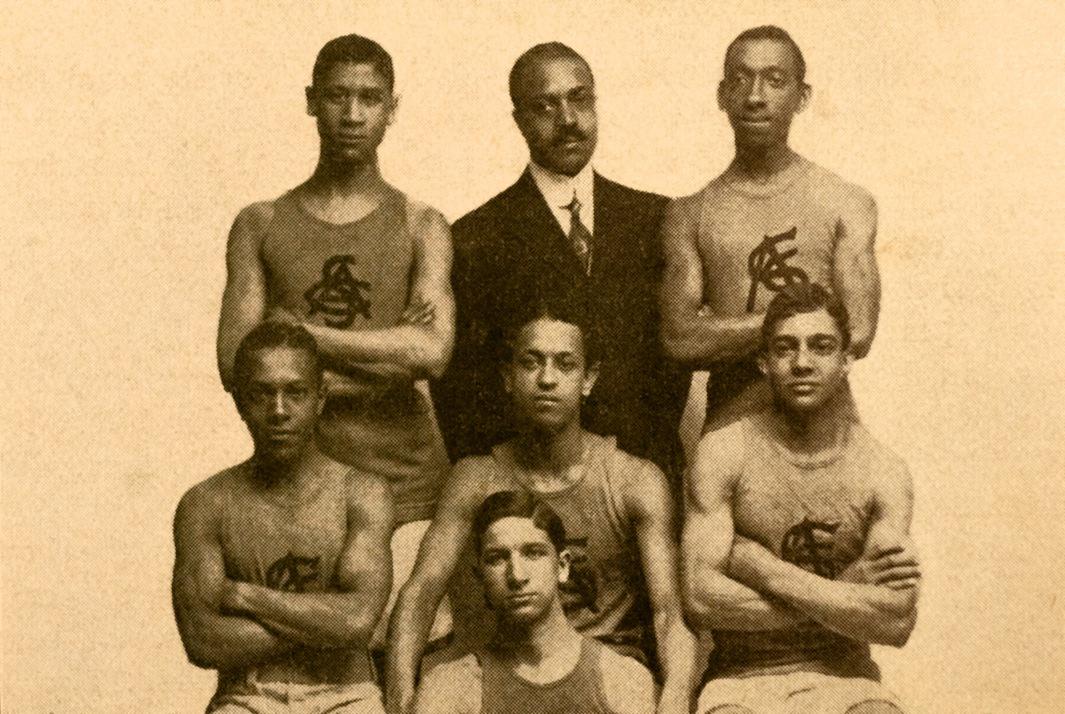
Courtesy of the Black Fives Foundation
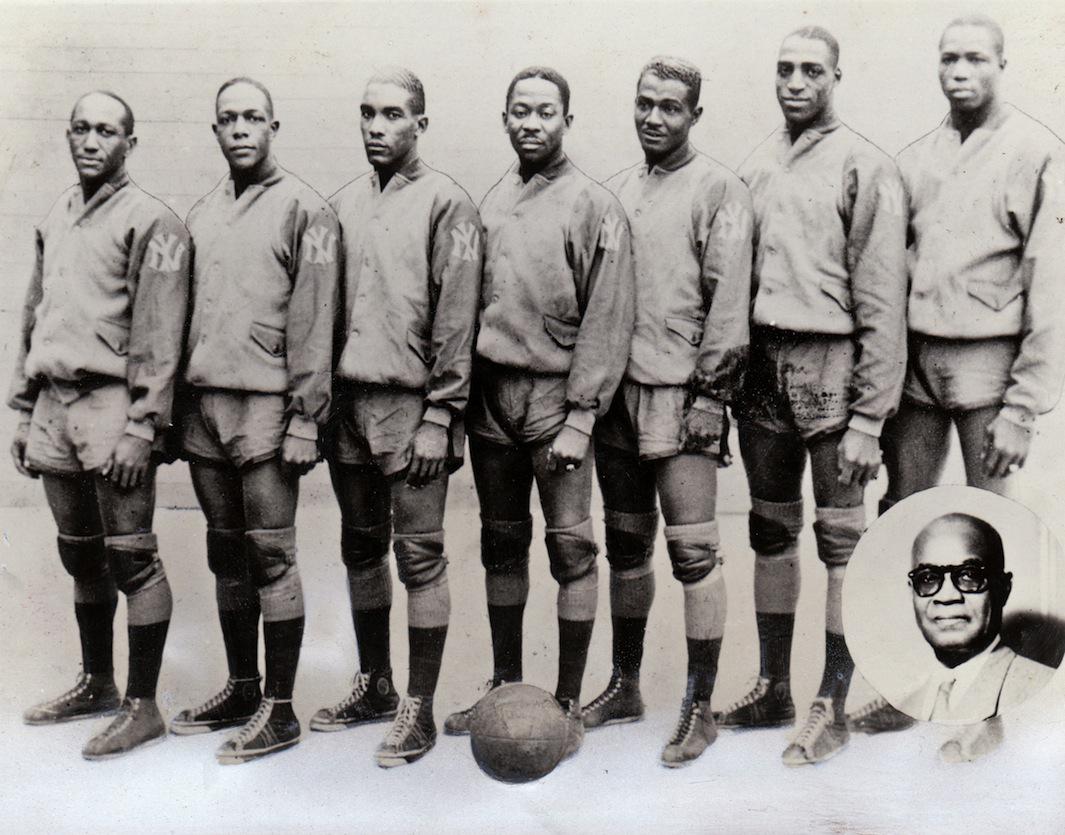
Courtesy of the Black Fives Foundation

Courtesy of the Black Fives Foundation
